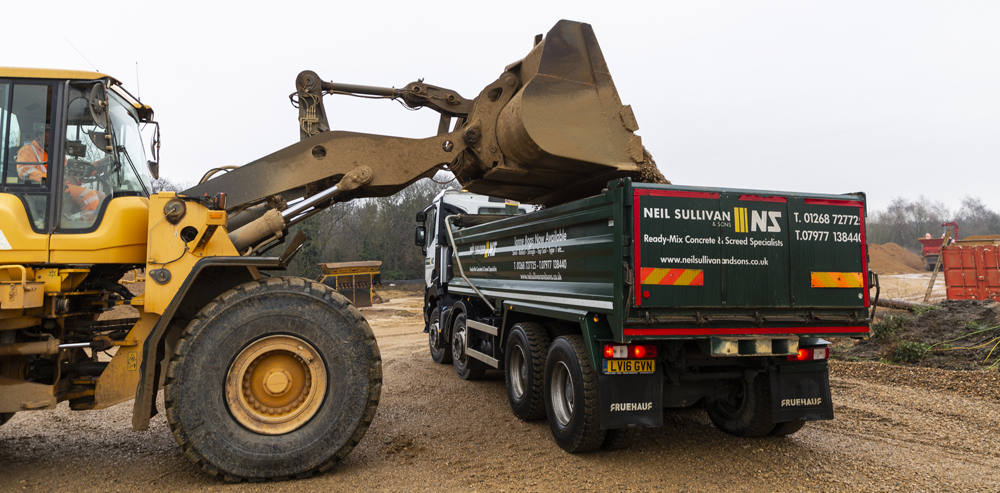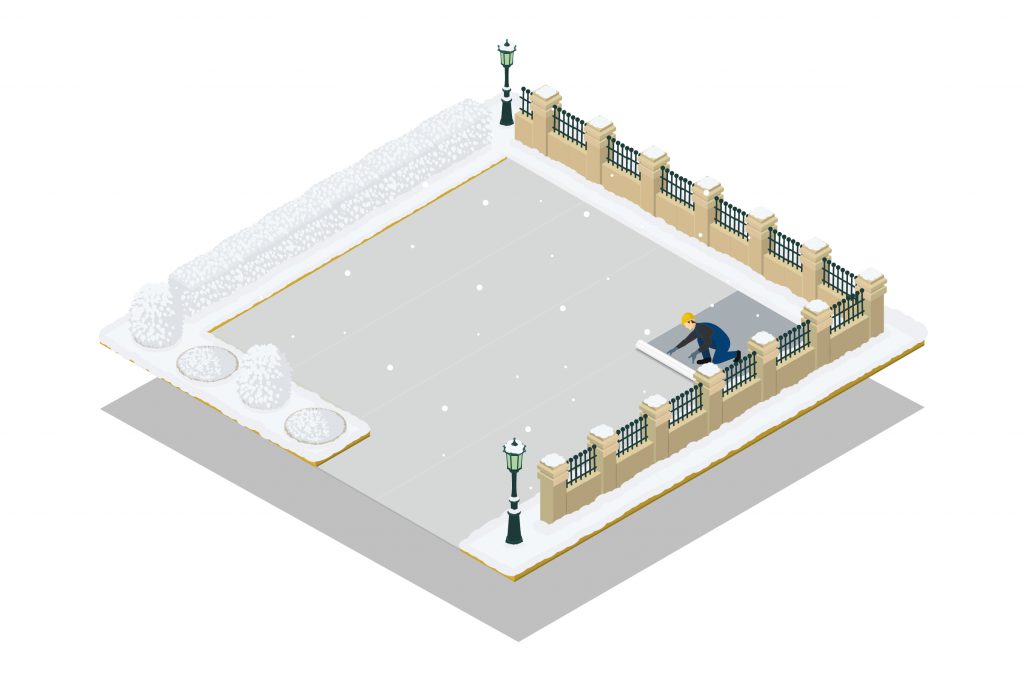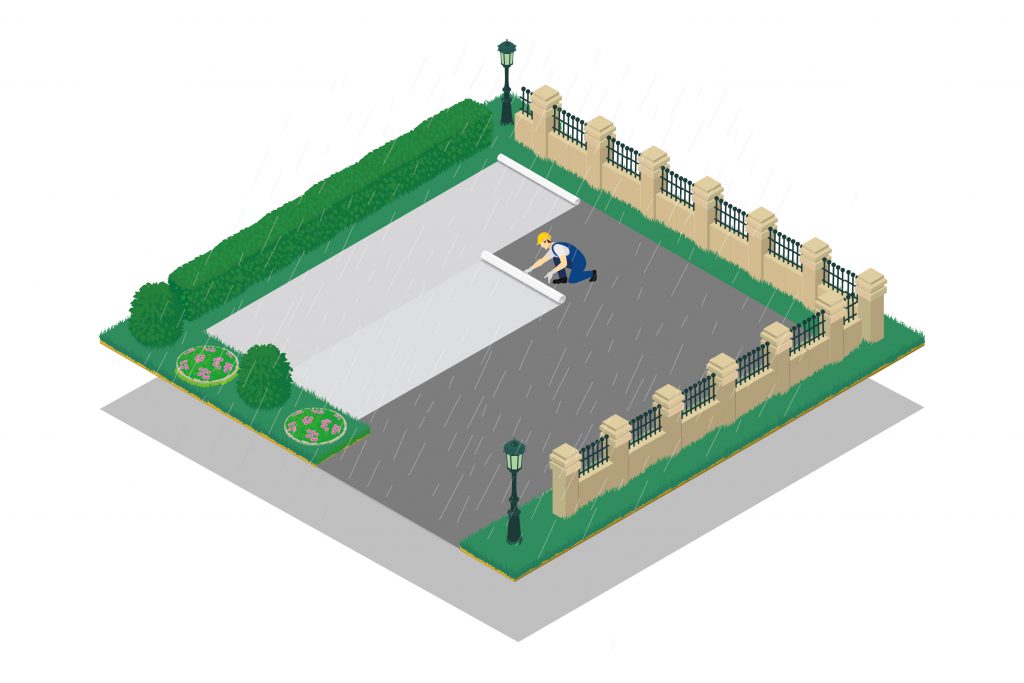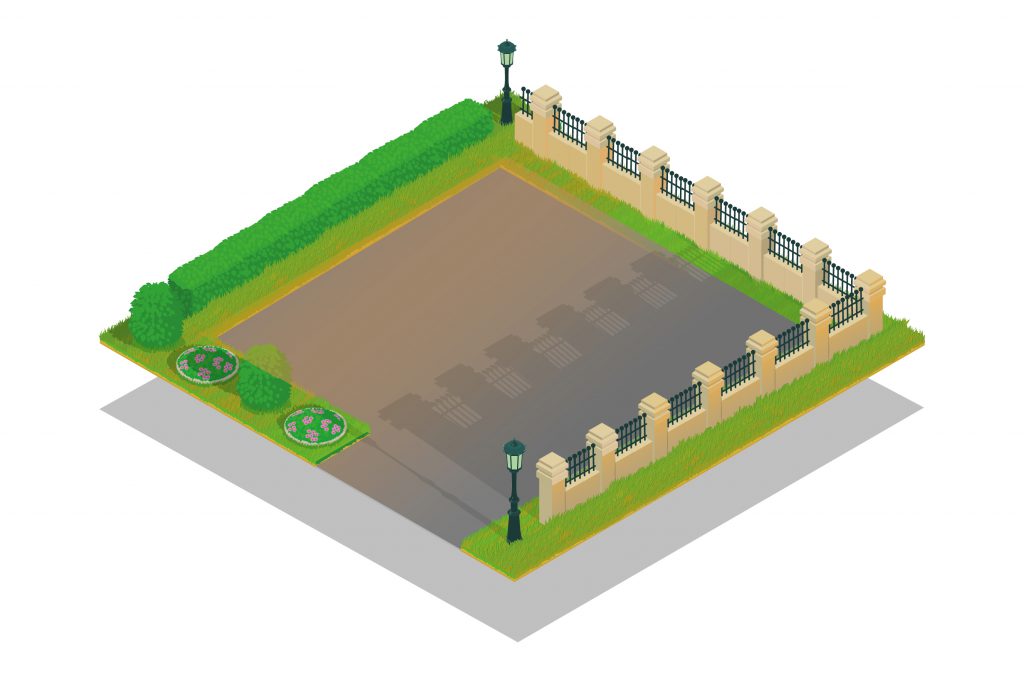How Do Weather Conditions Affect Concrete?
The beauty of concrete is that it can be poured in all weathers, though it’s worth being mindful of the effects that certain weathers can have on the concrete’s quality, its pouring ability, and its curing time.

In this handy guide, we explore three common weather conditions, how you can expect them to impact concrete activities, and how you can address any issues that arise.
Concrete in Cold Weather
Pouring concrete in cold weather requires care and attention to avoid the final product being unusable. Low temperatures can affect the speed of chemical reactions that occur in the curing process, and may also make the concrete vulnerable to the effects of freezing. Ultimately, cold weather concreting needs careful planning and common sense.

What temperature is too cold to pour concrete?
It usually takes at least 48 hours of concrete remaining above 5℃ to achieve the desirable strength of 5MPa – the concrete mix should also be above this temperature at the time of delivery. Pouring concrete at temperatures below this can have a negative impact on the concrete’s ability to cure, and even once the desired strength has been achieved, cold temperatures can still slow down the ability of the concrete to strengthen over time.
The temperature of the concrete mix itself also must be carefully monitored – if it drops below 0℃ before it has had a chance to reach 5MPa, the water in the mix may freeze and begin to expand the concrete.
How to pour concrete in cold weather
- Leave the formwork in place for longer than normal, just in case the concrete has been weakened.
- Avoid pouring concrete onto frozen or snowy ground as this will only cause delay and complicate matters.
- Keep the concrete warm. Use a concrete curing blanket which should help to prevent freezing by maintaining the concrete at a more desirable temperature. Leave this blanket on for about three days before removing it and allowing it air dry.
- Consider using an insulated formwork to keep the concrete warm.
Concrete in Rain
If you’re experiencing a patch of rainy weather, you may be asking yourself two questions: will concrete set in the rain? and can you pour concrete in the rain?
The answer to both is yes, so long as you take some precautions and are well-prepared for this eventuality. Pouring concrete in the rain is unfortunately a common occurrence for those of us in the overcast British Isles, and often can’t be avoided. And when you’re trying to adhere to a tight schedule, it’s important to overcome challenges posed by weather.

The problem of rainwater
- A key problem of rain is that it can wash away some of the cement in the concrete, if not fully set – this could potentially weaken the surface, and therefore hinder the durability and strength of the finished surface, and may allow even more water to be absorbed in the future.
- Rainwater travels through many areas and picks up plenty of pollutants and contaminants along the way, which can get incorporated into your final mix.
How to pour concrete in the rain
- The most basic thing you can do is check the weather forecast before you begin pouring. We all know that sometimes weather does its own thing, but a forecast can still help you get a sense of whether it’s a good day to pour your concrete.
- Always try and avoid mixing rainwater into your concrete mix, as this will cause contamination. Therefore, ensure as much rainwater drains away from your work area as possible. Push any excess water away from your mix/slab.
- Use covers or tarps to cover over the concrete while it’s curing and have these to hand anyway, even if it appears to be a fine day – you never know when rain will strike in the UK!
Concrete in Hot Weather
How hot weather can affect concrete
- Heat can affect a number of qualities of concrete. Firstly, curing concrete in hot weather reduces the setting time, meaning that speedier placement, compaction and finishing of the concrete is required.
- Concrete cures through the process of hydration, and when hot weather occurs this can speed up the process of hydration by raising the internal temperature of the concrete. This will then cause rapid loss of water, and therefore reduce the strength and durability of the final product due to thermal cracking and shrinking.
- Flaking and delamination can also afflict the concrete due to the increased rate of hydration.

How to pour concrete in hot weather
When pouring concrete in hot weather, there are a few things to be mindful of:
- Select the coolest parts of the day for pouring and curing.
- Keep everything in the shade until the time comes to use things.
- Another tip is to use cooler water to dampen the side forms for any walls or slabs.
- Admixtures can be incorporated into the mixture to maintain the cement/water ratio – thus helping it to maintain its consistency.
- Use windbreakers to limit the effects of the weather on your working area and the concrete.
Here at Neil Sullivan & Sons, we’re the leading concrete supplier for Essex and beyond. We bring affordable concrete services to both domestic and commercial clients, and will deliver the finest grade of concrete directly to your premises – always making sure that it matches your exact requirements. Speak to our friendly team today to discuss your needs.